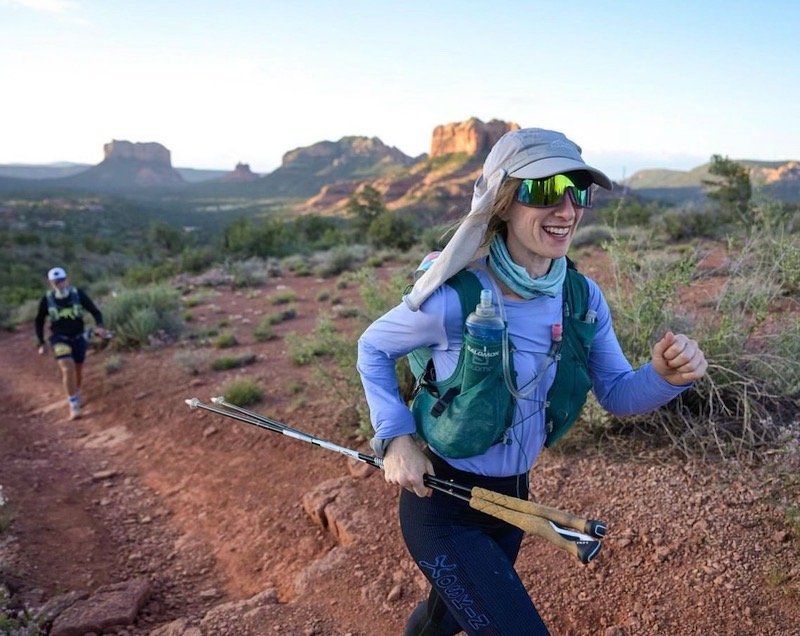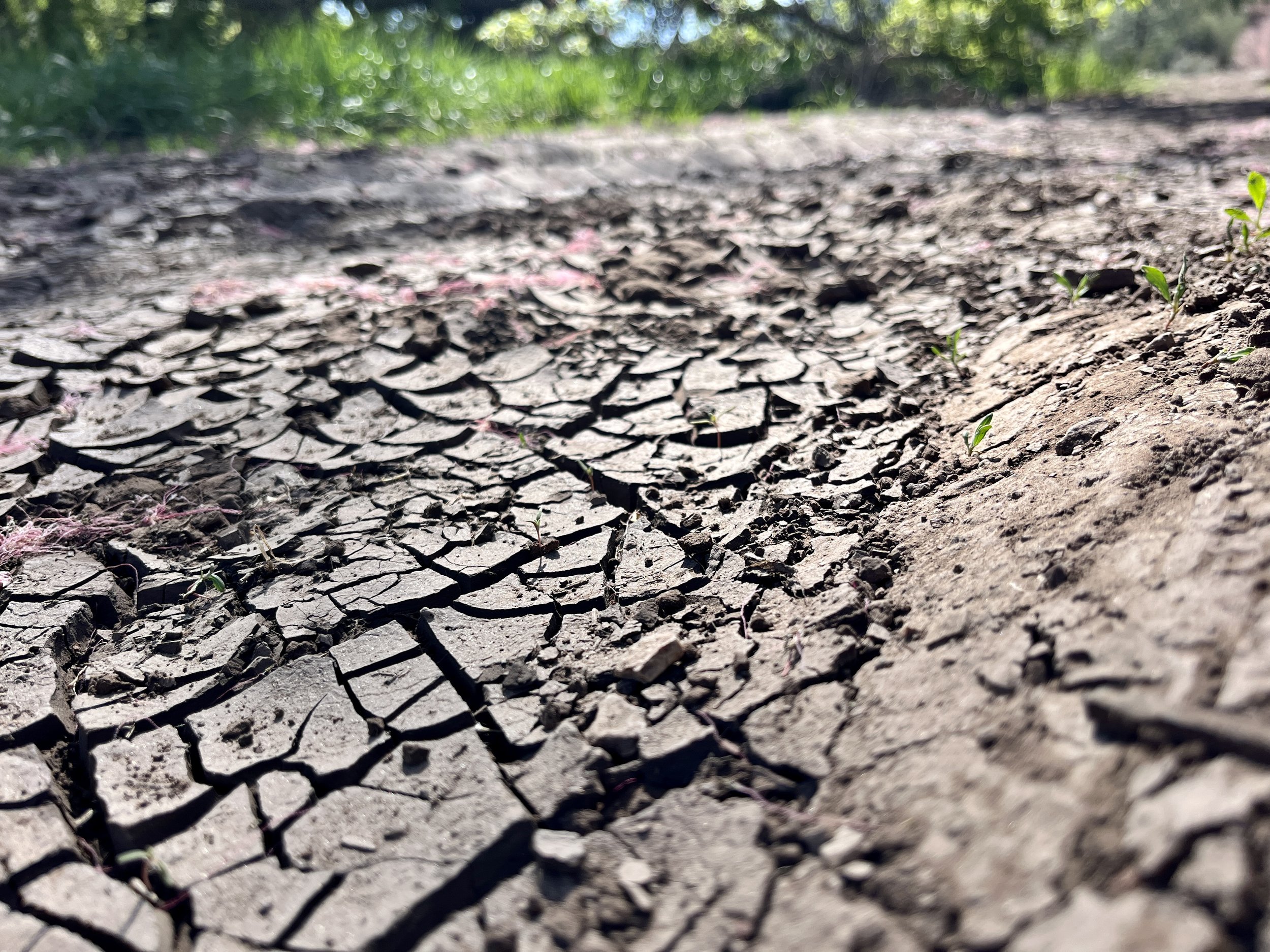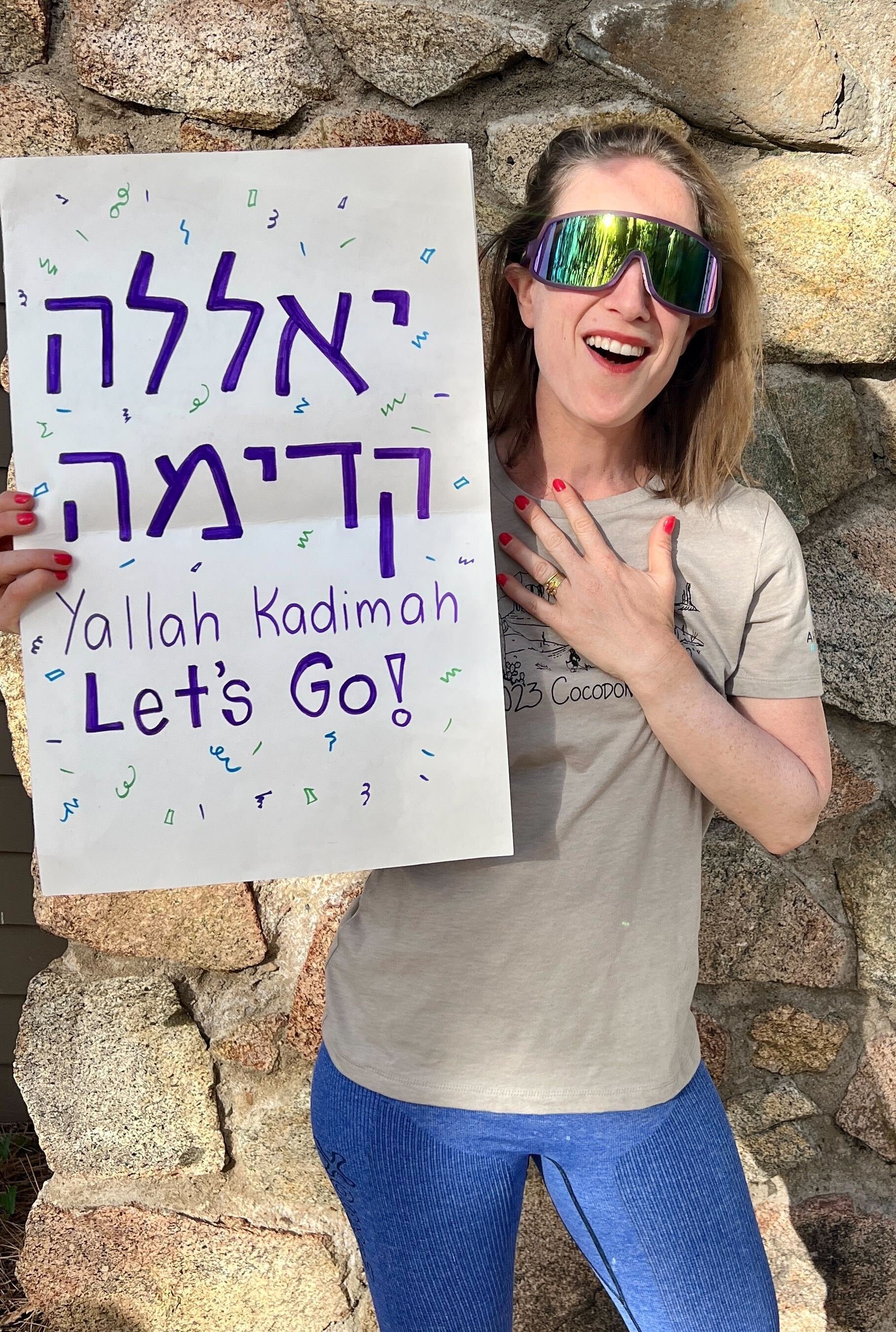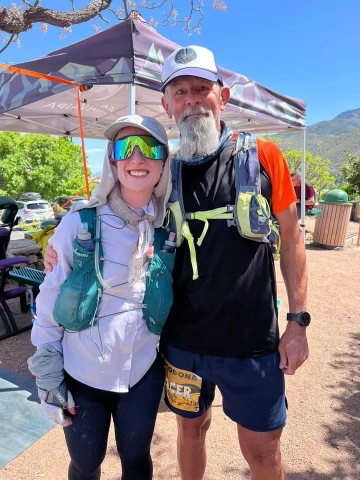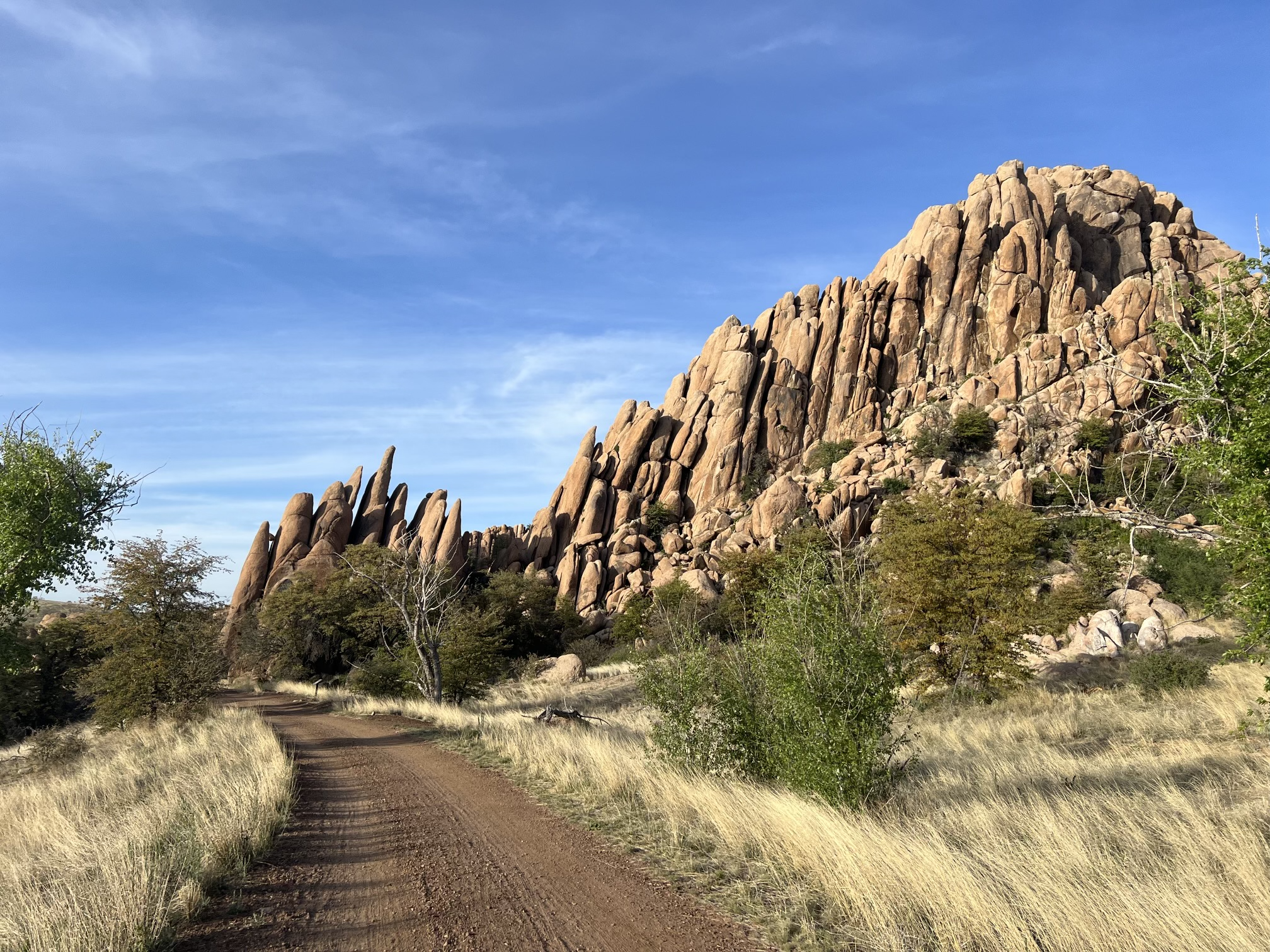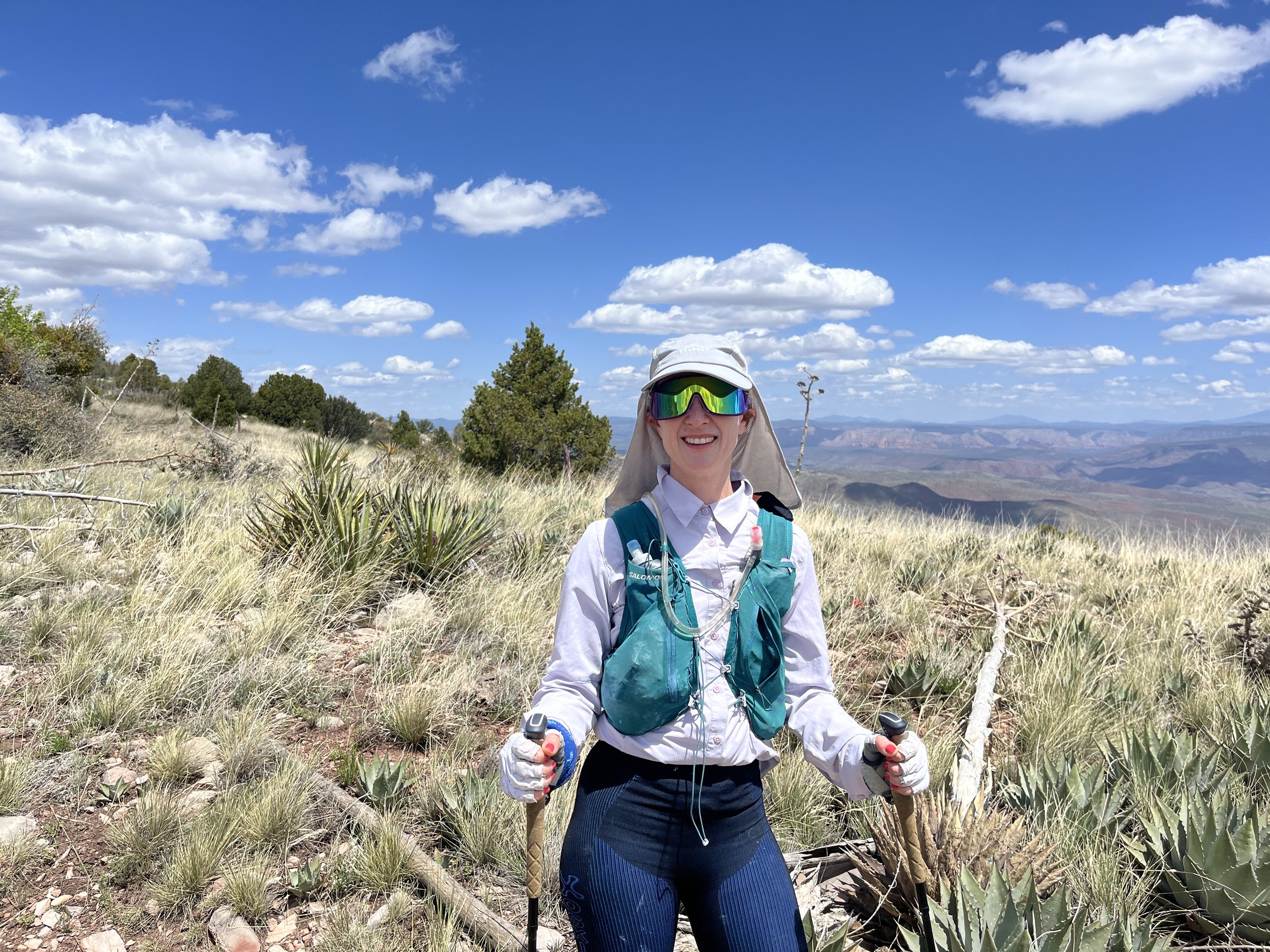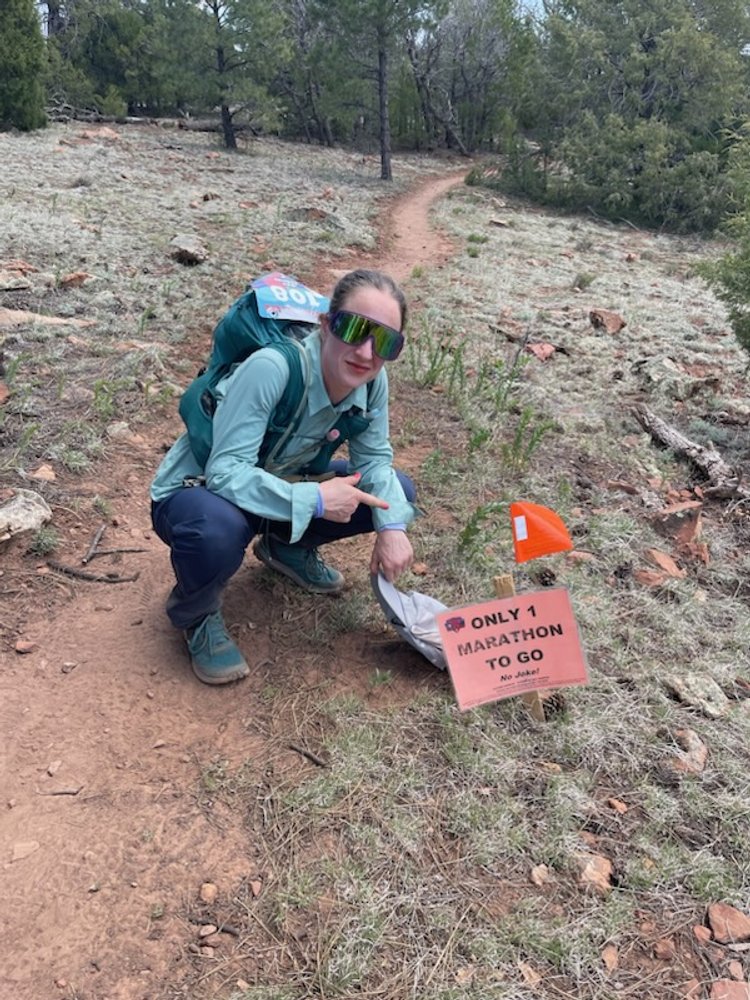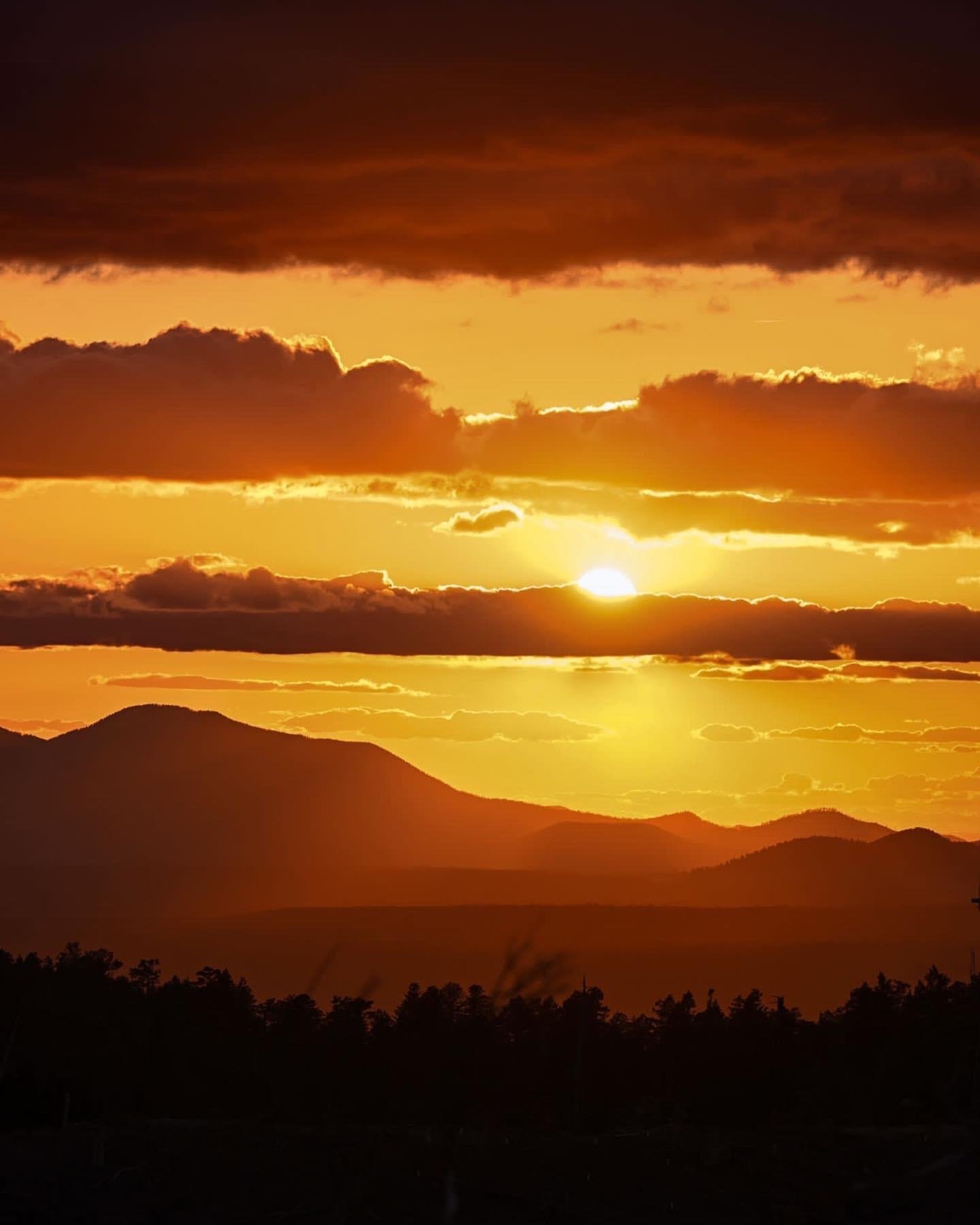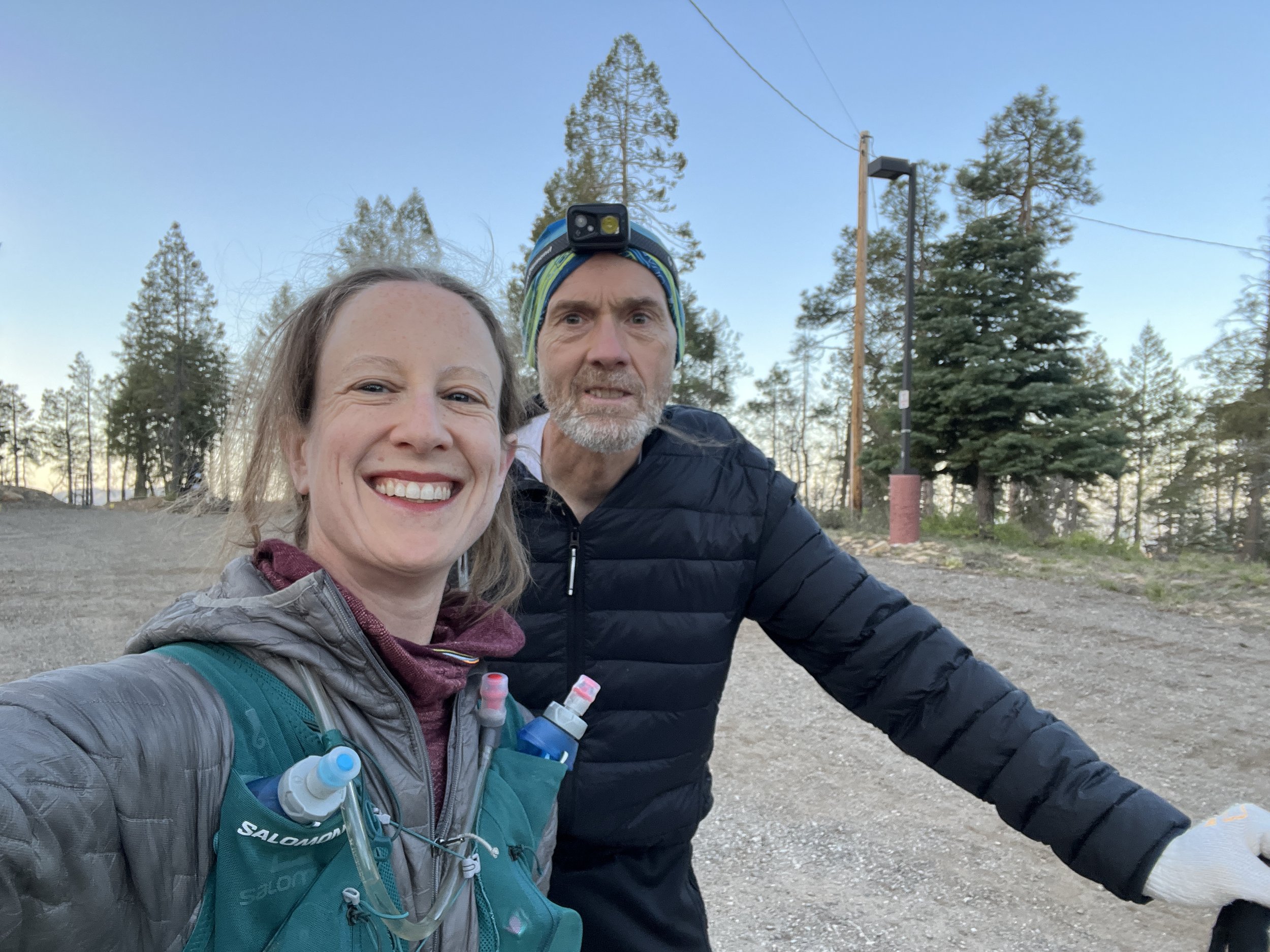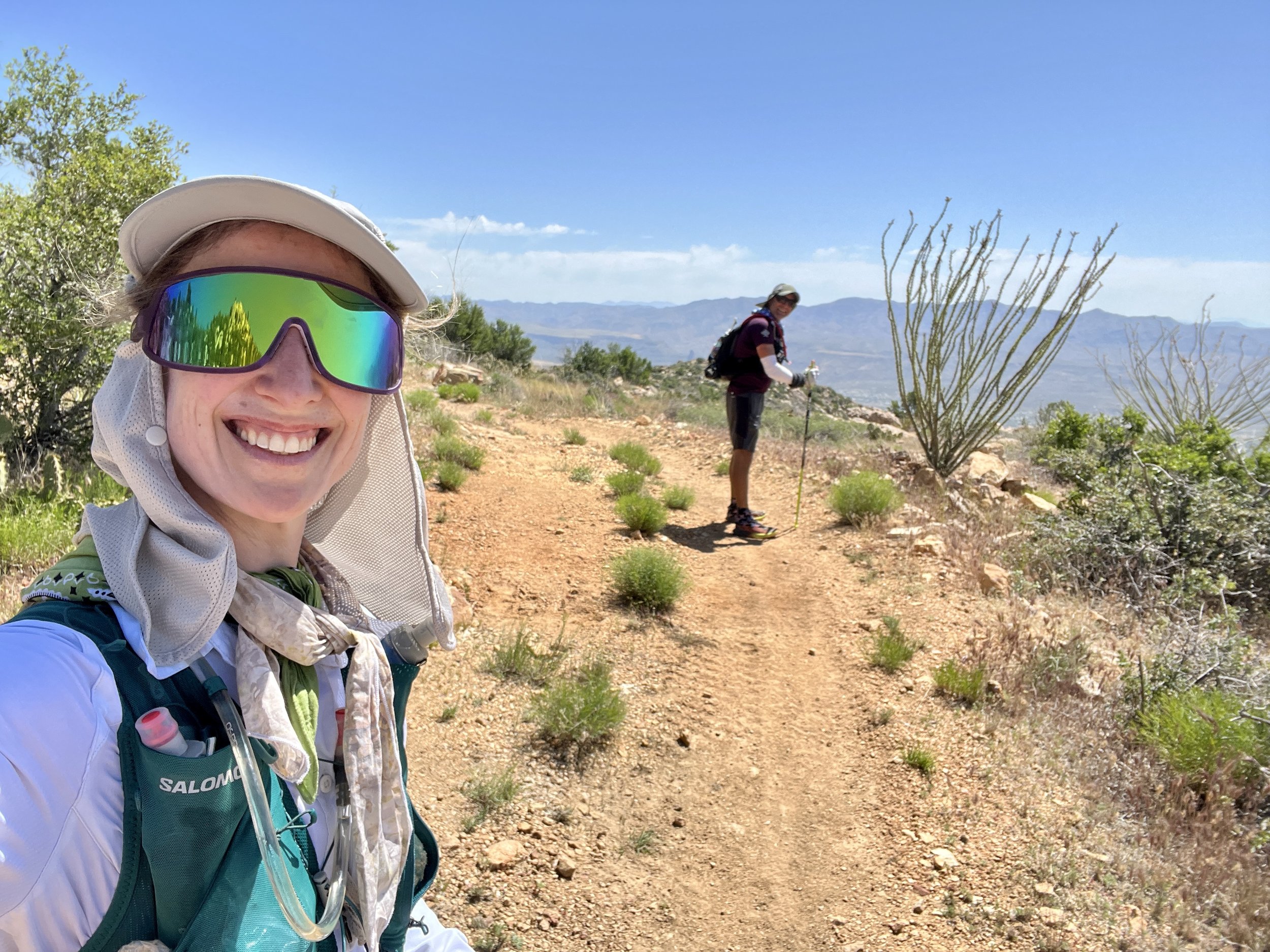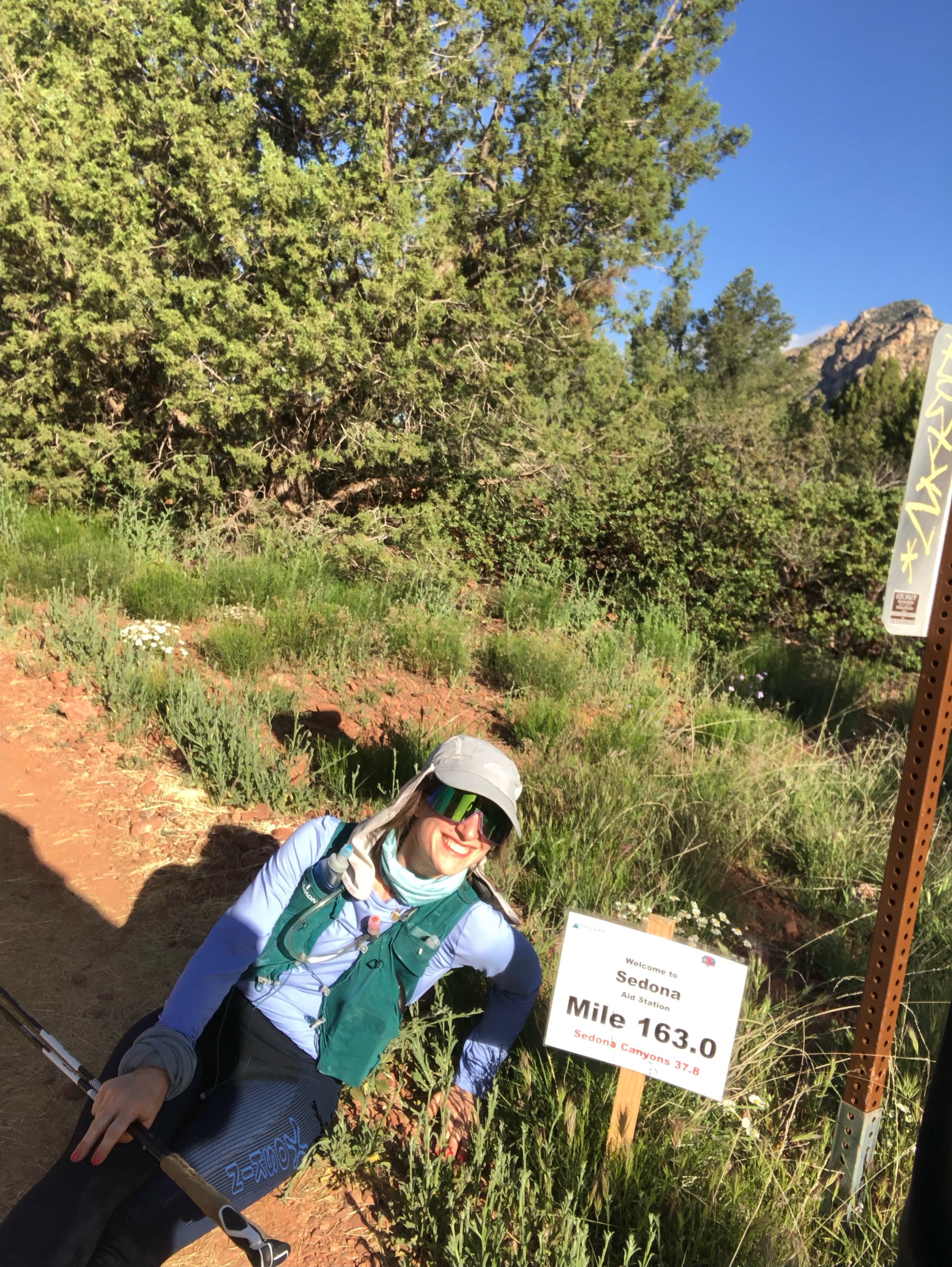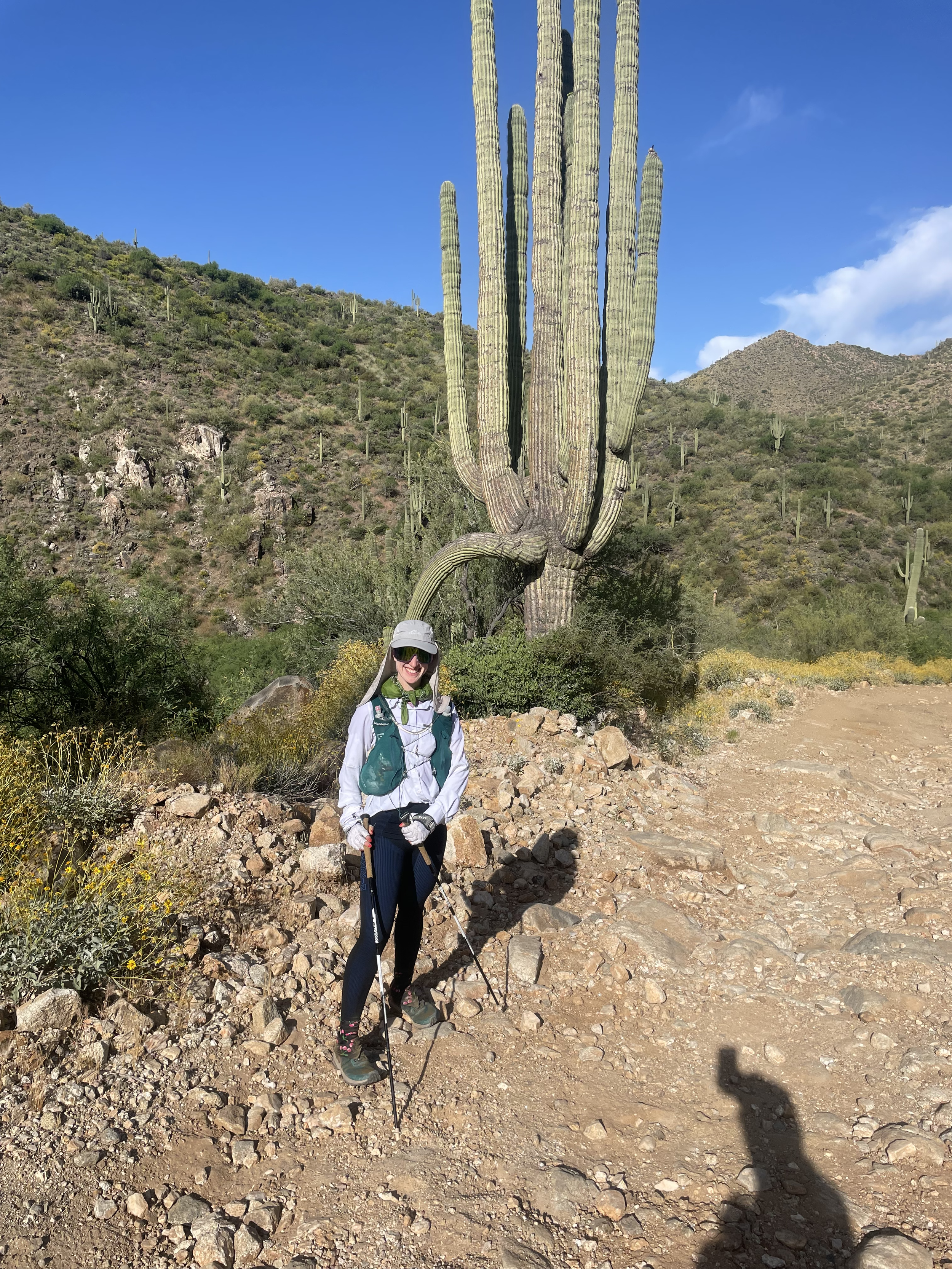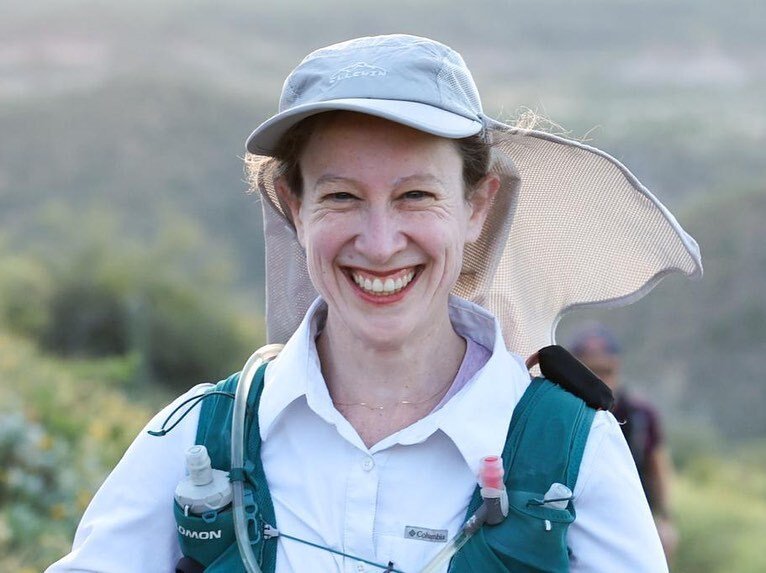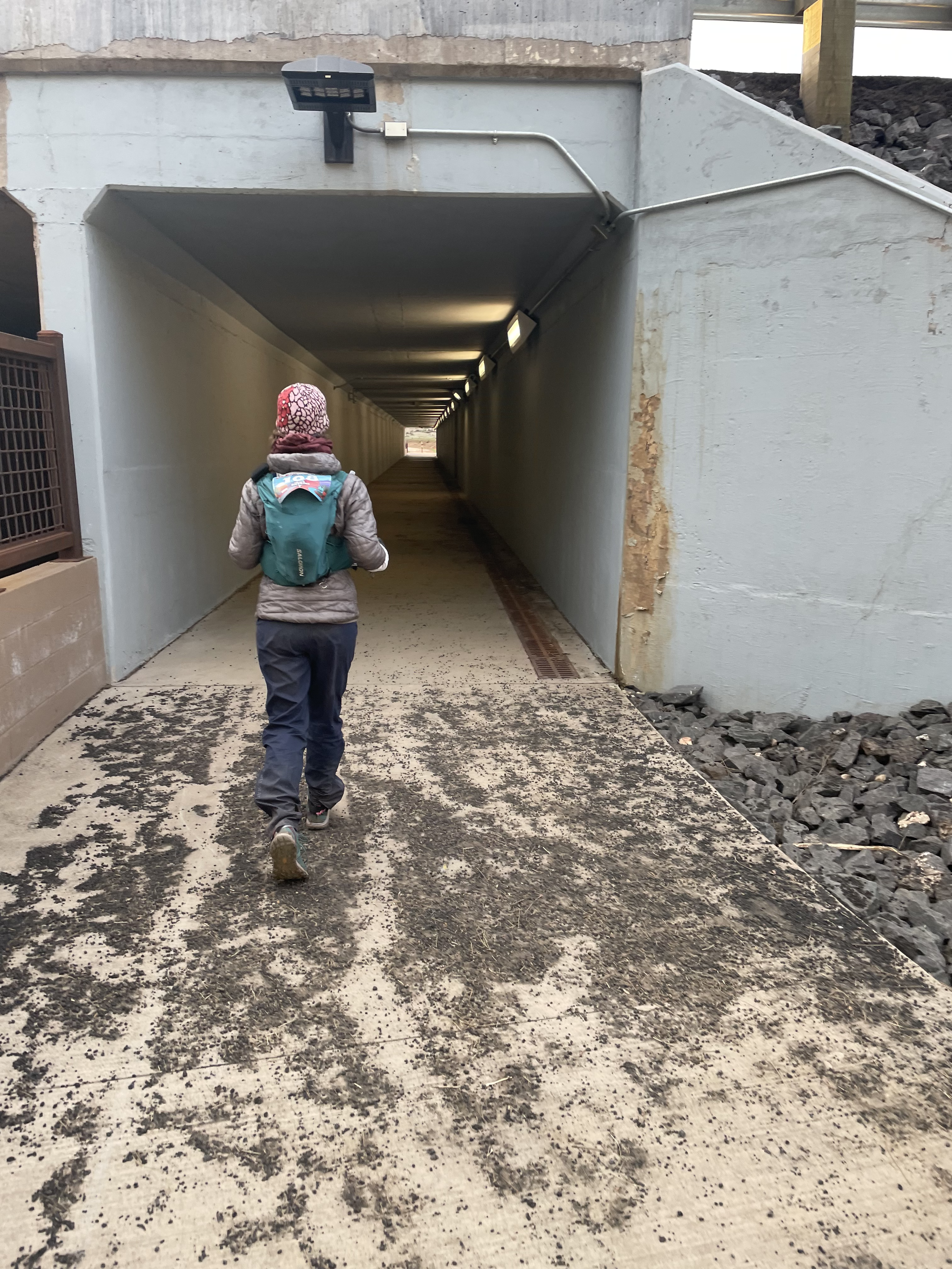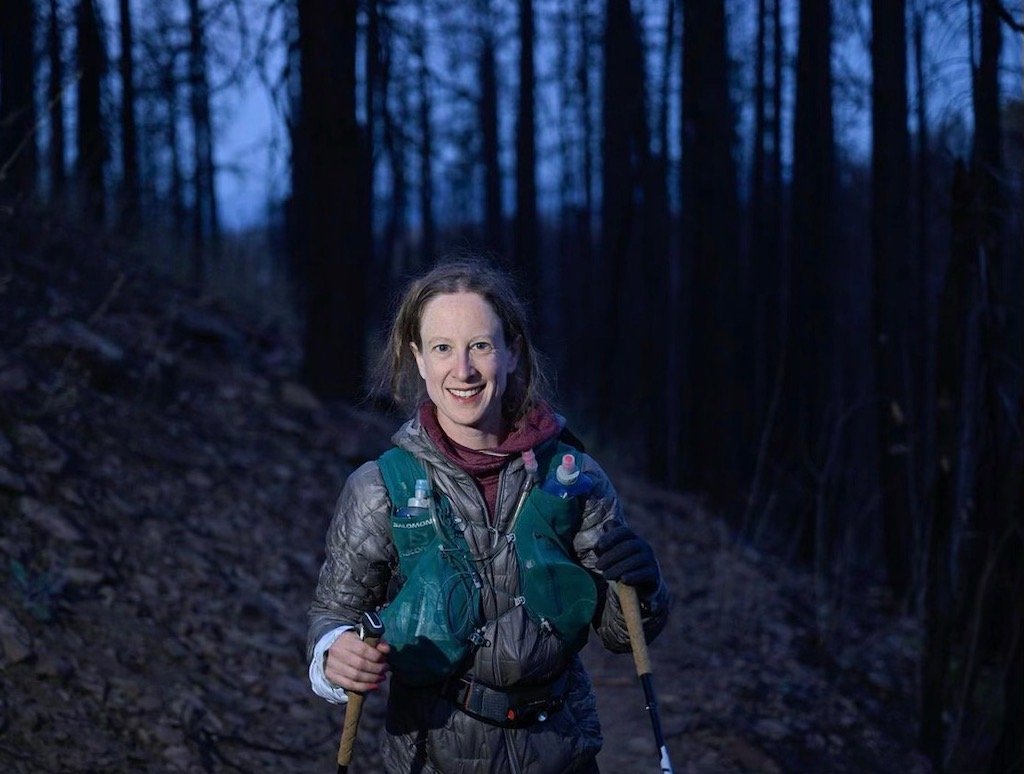250 Mile Race for JKG Tuition Assistance
Written by Ana Robbins, JKG Executive Director
I did it!
250 miles
116 hours, 40 minutes
24 aid stations
96 degree fahrenheit - high; 9 degree fahrenheit - low
4.5 hours of sleep
6 crew members
2 pairs of shoes
$68,000 raised for charity
131 donors
A bazillion calories
So much water
A ton of sunscreen
Wow, I ran the 250-mile Cocodona course across Arizona, and I loved it! The Cocodona Trail is a curated route through central Arizona linking historic towns like Black Canyon City, Prescotot, Jerome, Sedona, and Flagstaff. I immersed myself in the Sonoran desert, running through canyons and pine forests on this magical route. It is said that running the Cocodona Trail is one of the most life changing and epic journeys of an endurance athlete’s career. It was all that and more.
I ran to challenge myself, and to raise funds for the JKG Tuition Assistance Fund. I am grateful to everyone who supported me in both endeavors. I am incredibly privileged to receive the training and support of Coach Trena Kennedy and the expert crewmanship of Brad Goodridge. I would not be here without them. A special thank you to my honorary crew members who donated $5,000 or more: Steven and Janet Cadranel, Stephen and Jolynn Merlin, Michael and Andrea Leven, Barbra and Gene Hirsch, Lois and Larry Frank, Susan and John Berry, Aaron and Angel Goldman and Steve, Linda and Cathy Selig.
My journey began two days after returning from Federation’s Community Journey to Israel. I definitely underestimated the impact of jet lag on my body (note to self, leave time to adjust to the time zone before racing, next time!). One of my crew captains and dear friends, Brad Goodridge, made the long drive to Arizona ahead of time so that we would have a crew vehicle and the other supplies we needed. Coach Trena Kennedy and I took a 6am flight to Phoenix and we all headed to race check-in.
I must admit, when we arrived, I felt like an imposter surrounded by famous endurance athletes. What made me think I could race with the elites? What was I doing? My chutzpah, I thought, was bound to catch up with me! Trena suggested that I might want to change out of my pajamas and into racing clothes… maybe that would help alleviate my imposter syndrome (it didn’t).
Despite my nerves, I was able to meet up with a friend from a previous race, Matt Miller, who was incredibly well-prepared for the challenge ahead. While I was eating Bamba and drinking arak on the beach in Tel Aviv, he studied everything about the course, had gone on training runs and planned every detail of his race ahead of time.
Ahead of the race I practiced a lot of hot yoga, rode my Peloton with no consistency, and ran some in the woods (for context, my longest training run was only 25 miles).
The next morning at 5 am 200 racers, each with GPS trackers, started out on a single track trail — which meant that the first hour looked more like a conga line than a race. Temperatures got close to 100 degrees as we ran through the Sonoran desert among Saguaro cactus and Ocotillos. I shielded myself from the sun with a fisherman's hat, long pants, and a long sleeve shirt. During this leg of the race, we were required to carry 4 liters of water (for reference, about 9 lbs of water), food for 7 hours, cell phones, head lamps, extra batteries, space blanket, whistle, and 400 emergency calories. I also carried emergency cold gear including an extra buff (a soft handkerchief thing that goes around your neck or arm), hat and gloves too. You just never know what can happen in the wilderness and I’ve learned it’s better to be prepared.
After crossing the Aqua Fria River in the Black Canyon (think: wet feet for the next few miles), the trail climbs up and then descends down to the base of the Bradshaw Mountain foothills. The first 50K of this course has been called the most difficult 50K in the country. There is a lot of climbing over shifting rocks and boulders. This section is steep, rugged, and hot. About 20 miles in I lost track of my buddy Matt because he stopped to help a dehydrated, dying runner. One thing I love about this sport is that even though you’re competing, athletes help one another. The race is so long that sacrificing a couple hours to save someone’s life doesn't seem like a big deal. In this case, Matt was saving someone who ran out of food and water. Later in the race, I helped someone who did not have the right warm weather gear to survive the below freezing nighttime temperatures.
At mile 37 in Crown King, I arrived at the first crew aid station and found out that my friend Matt was several miles behind me. My crew wouldn't let me wait for him, but going into the night alone wasn’t appealing. Luckily, I met Randy Knight, and we climbed Tower Mountain together. It was a slow and steady climb, but we enjoyed each other's company, and I was happy to have someone with me. In real life, I would never go into the woods alone with a man, but in an ultra race, friendship means safety, and fast, deep friendships form easily. There’s nothing like 12 cold, dark hours to bond two people. Randy and I had a great time together and he told me that I was the first Jewish person he’d ever met! I was honored and hope I made a good impression! (ha! If he thinks all jews are ultra runners, he is going to be disappointed.)
The next day, I continued on my own after Randy decided to sleep at the Camp Kippa aid station. The sunrise gave me a (false) renewed sense of energy so I pushed forward on my own. This may have been a mistake because I became so exhausted that I actually fell on the trail. The psychological fall hurt more than the physical fall. I got up, popped a caffeine pill and pushed forward to the next aid station where I ate a veggie burger, drank, slept and retaped my poor feet. Pre-taping is a way to avoid friction and blisters, but if the tape starts to peel off and isn’t addressed it can do more harm than good. During the toughest moments in this race I channeled my JKG students, their sweet videos and encouraging notes, and it really made a huge difference.
In ultra marathons, each competition has its own rules. Some race directors are more sadistic than others, but at Cocodona, Coach Trena was able to start pacing me around mile 70 which helped me get my head right and my spirits up. A pacer is a “safety runner” who keeps the racer company later in the race and makes sure that even in a sleep deprived state the runner keeps moving forward.
After a few hours on trails we headed toward downtown Prescott and the infamous Whiskey Row. This was the first capital of the Arizona Territory dating back to 1864 and the epicenter of Arizona mining history. I didn’t drink whisky but I did eat my weight in pizza. In a race like this it’s nearly impossible to keep up with calories but I gave it a good effort!
Descending from the Bradshaws and on route to Mingus Mountain we crossed the Prescott Valley, which had an extremely diverse landscape containing Ponderosa pine forests, desert grasslands, lakes, and the unique Granite Dell rock formations. We climbed over exposed bedrock and large boulders of granite that have eroded into an unusual lumpy, rippled appearance. It was breathtaking.
Twenty miles later, Brad took over pacing responsibilities and we went through Fain Cattle Ranch lands on the way to Mingus Mountain. This was a very weird part of the course with zero markings through miles of unmarked cow pasture. I later heard that the reason it appeared unmarked was that the cows had eaten at the flags. Even in the dark, we had to watch out for cow poop and cacti!
Stretching diagonally across Central Arizona, the Black Hills rise up to almost 8000 feet and separate the Prescott Valley from the Verde Valley. My next pacer was Krista, who completed Cocodona last year. She and I climbed single-track switchbacks up, up, up, and over the range to the top of Mingus Mountain. I ate a truckload full of veggie lasagne before the technical descent on the North Mingus trail, which eventually dropped us into the old mining town of Jerome. Krista was the first of four fantastic pacers who I had never met ahead of the race. This is not a very typical way to find pacers, but it’s always worked well for me. Basically, based on their locations and race experience, I seek out runners on Facebook and ask them if they’ll support me during the race. I have met the most exceptional people this way. In fact, this is how I met Coach Trena around 1.5 years ago! So, yeah, I highly recommend running in the woods at night with strangers.
At the 125-mile mark, I was emotional and brought to tears when I didn't see a "You've made it halfway" sign. It’s surprising what can make you cry after days without sleep. I met my next pacer, Greggy, and immediately felt a soul connection. Greggy has raced and placed in every big race, and he was sweet to me both when I was doing well and struggling.
Our first stretch was down the most insane powerline I’ve ever been on. Imagine a very steep mountain littered with tiny unstable boulders and colorful glass. It wasn’t fit for humans, but we made it down, somehow. That night was difficult and I was only a couple of hours ahead of cutoffs, so I didn’t have any time to spare, but I had to sleep. First, Greggy tried giving me a 18 minute trail nap (trail naps can sometimes be small miracles, you lay down for a short nap and trick your body into thinking it slept for hours and wake up feeling revived). He watched over me under the light of a full moon as I slept. However, my nap wasn’t productive.
A few hours later, at an aid station (which is basically a restaurant/bar in the middle of the woods, sometimes with blaring music, sometimes with propane heaters) I slept in the back of someone’s pick up truck for 90 minutes which brought me back to life. We pressed on.
As the sun rose, we could see Sedona, the red rock country and one of the most iconic landscapes in the United States. We had plenty of time to soak up the views from every vantage point as the course traversed the entire valley under the big red walls and through the heart of the town.
Luckily, at the Sedona aid station, I reconnected with my old friend Matt, and his fun-loving, fresh pacer Jess (we call her “fresh” because she was just starting and didn’t already have 180 miles on her legs). We journeyed towards Casner Canyon, crossing a waist-deep, cold river that was a welcome relief from the sweltering heat. Although I was daunted by the climb ahead, I loved running alone and tackled it confidently.
The climb got me to the Coconino Plateau, the largest contiguous Ponderosa Pine forest in the world. Taking a series of forest roads and single-track, I passed the 200 mile mark on the way towards Fort Tuthill County Park.
Next I met up with Brian, a marathon runner, who paced me for something like 30 miles, his longest run ever. We linked up with two other racers, Pat and Kenny and stayed together for hours and hours. I slept 1.5 hours during this stretch, which was much needed. We shared laughter, exhaustion, and even a little accident when I laughed so hard I peed in my pants.
During this stretch, we also found a hypothermic runner. We wrapped him in all of our emergency blankets, filled him with calories and marched him to the aid station (probably saving his life). Afterward, I continued with Cindy, who was a lovely pacer, even though I was delirious from a lack of sleep at this point. I even saw a pickle running(?)
Coach Trena paced me on the final climb of the course up Mt Elden. Fortunately, my Georgia home course, the Duncan Ridge Trail has prepared me well for fierce climbs. The Elden Summit Trail climbs to just over 9000 feet above Flagstaff and a fire lookout tower that helps monitor for fires in the summer months. After the summit was a quad pounder, as the trail drops nearly 2,000′ in 1.5 miles. After that brutal descent we had 4 miles of park trails (felt like 40 miles) and another 1.5 miles of sidewalk into the finish.
Finishing an ultra isn’t what you would expect. The race may have been the length of 10 marathons, but the finish is nothing like at a marathon. I came in at 1:45 a.m. with about 10 people waiting at the finish line. I was overwhelmed and exhausted, and touched to see Eric, who surprised me by flying in for my finish.
Overall, this was an unforgettable experience and I'm grateful to have had the opportunity to challenge myself and to raise money to support the future of Jewish education. Once again, thank you to everyone who supported me along the way, including those who generously donated to the JKG Tuition Assistance Fund, my crew members, and my pacers.
Anyone who has ever come home after a life-changing summer at overnight camp can imagine how I feel right now. Everything is good, I love my real life, but I miss last week!
When’s my next big race? Not soon enough! But for now, I’m giving my body and brain the time they need to rest and repair.
In the meantime, help me close out this campaign to raise money for tuition assistance. Every dollar you give will help give a student a Jewish education. Thank you!


